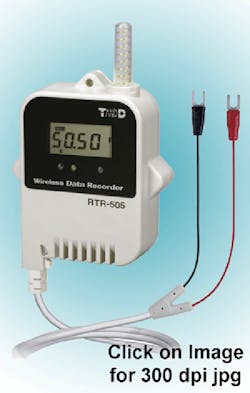NEW Wireless Pulse Counting Data Logger
TandD Corp. has introduced the NEW RTR-505P Wireless Pulse Counting Data Logger.
This NEW model can record pulses from devices such as flow meters, anemometers or the opening and closing of switches from a variety of sensors.
By using any of the RTR-500 Series Base Units, the recorded data in the RTR-505P not only can be collected via wireless communication, but can also be used for remote data monitoring and collection, warning monitoring, and data management through networks, allowing construction of a data logging system to match the needs and environment of the user.
The logging capacity of the RTR-505P is 16,000 data readings and Maximum Count 61,439 / Recording Interval.
The Input Signal can be a Non-voltage Contact Input or a Voltage Input from 0 to 27 V.
The Detection Voltage can be Lo: 0.5 V or less or Hi: 2.5V or more
The Input Impedance is Approx. 100 KΩ pull up.
>>For more information on this product, click here

